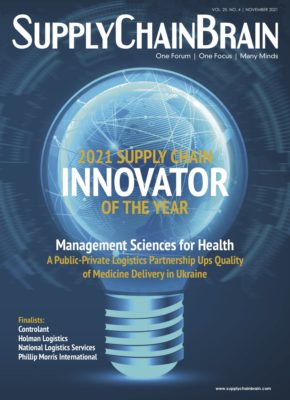Our Publications
Please select a publication below.
Supply Chain Brain Magazine

2021 Supply Chain Innovator of the Year
Volume: 25
Edition: 4

Timely, incisive articles delivered directly to your inbox.






